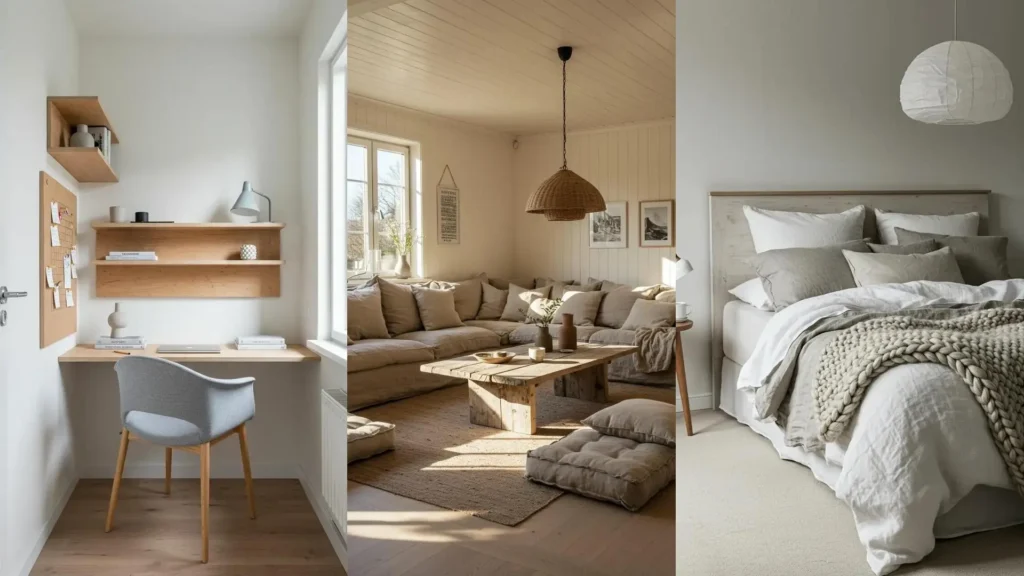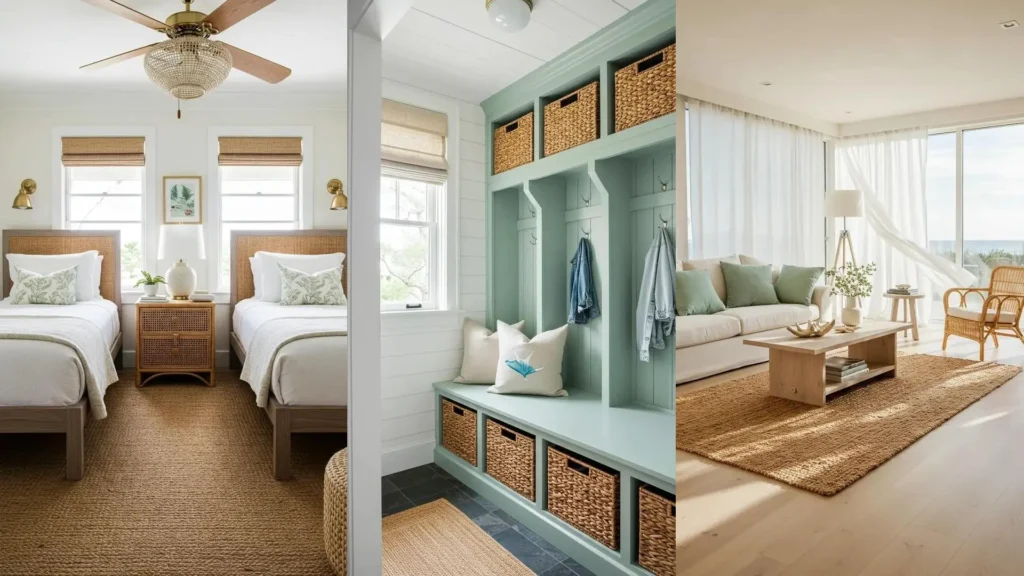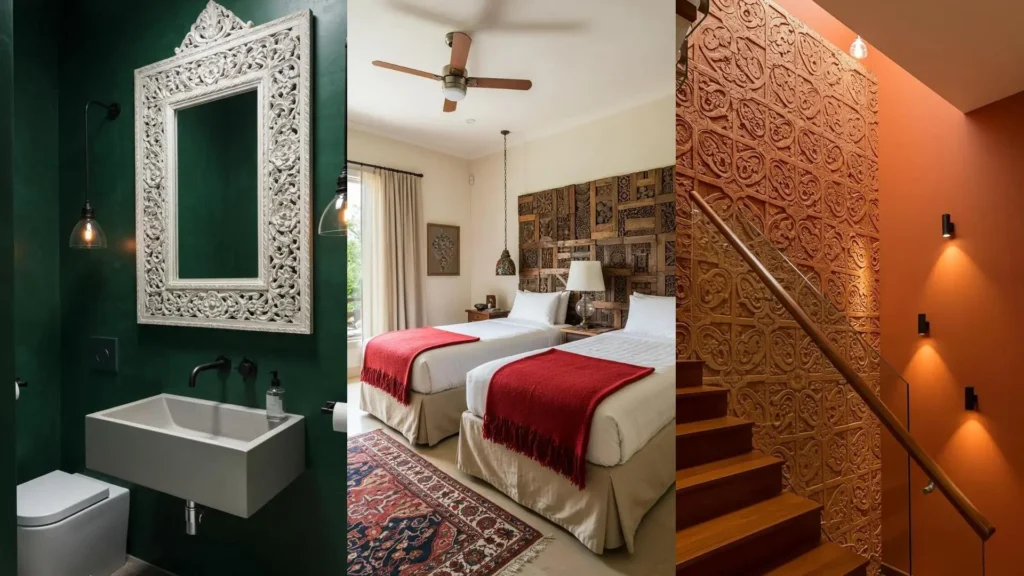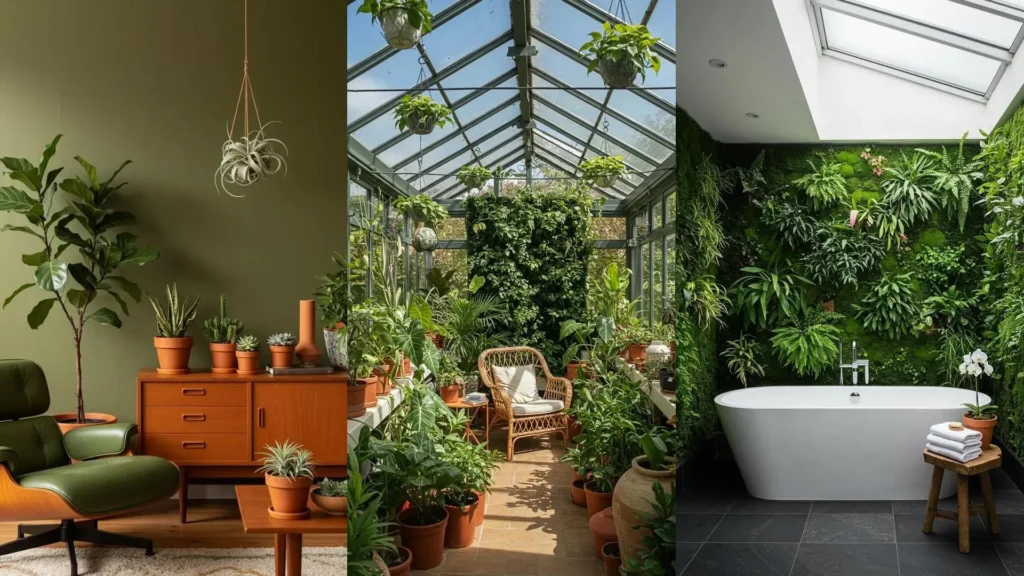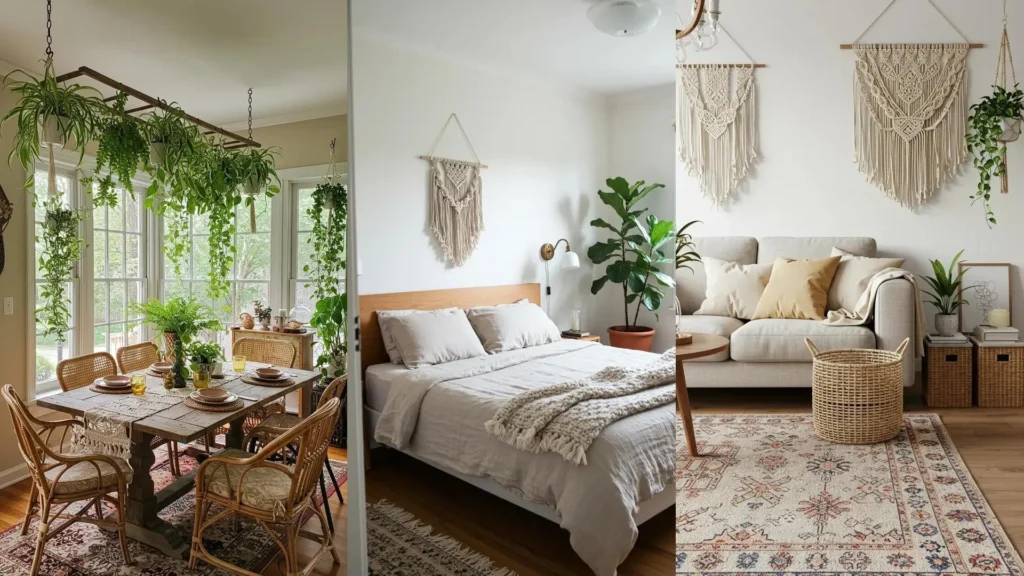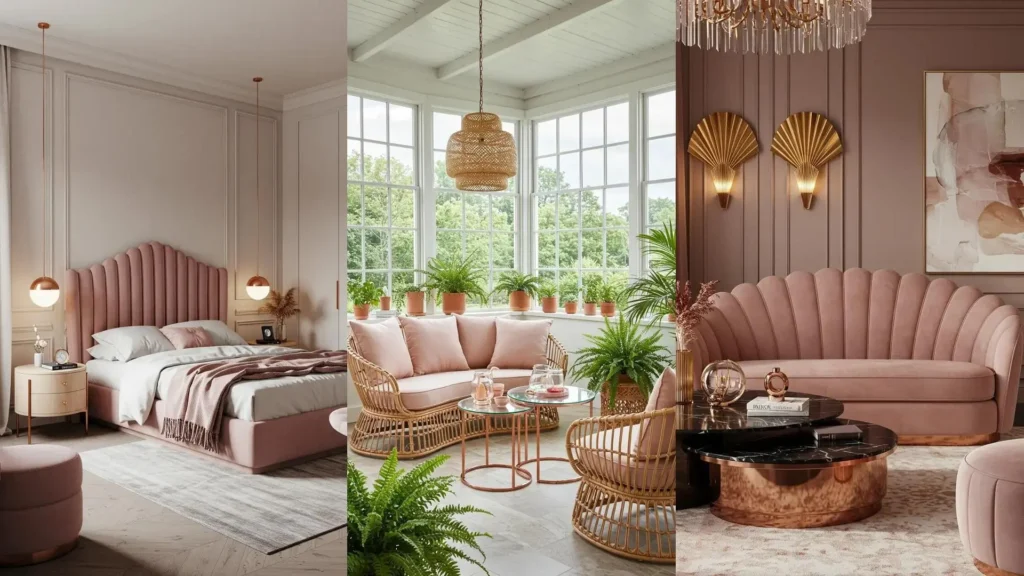There is a profound sense of peace that comes from a well-ordered, beautiful space—one that feels both thoughtfully designed and deeply personal.
Scandinavian design offers us a blueprint for achieving this balance. It’s not about sterile minimalism, but about intentional choices: favoring natural light, celebrating the warmth of pale woods, and layering soft, honest materials like linen and wool.
Here, you will find practical ways to bring this quiet elegance into your own home. These are not grand renovations, but simple, powerful shifts in perspective that help you create a space that feels calm, cohesive, and completely your own.
1. Diffuse Light with Sheer Curtains
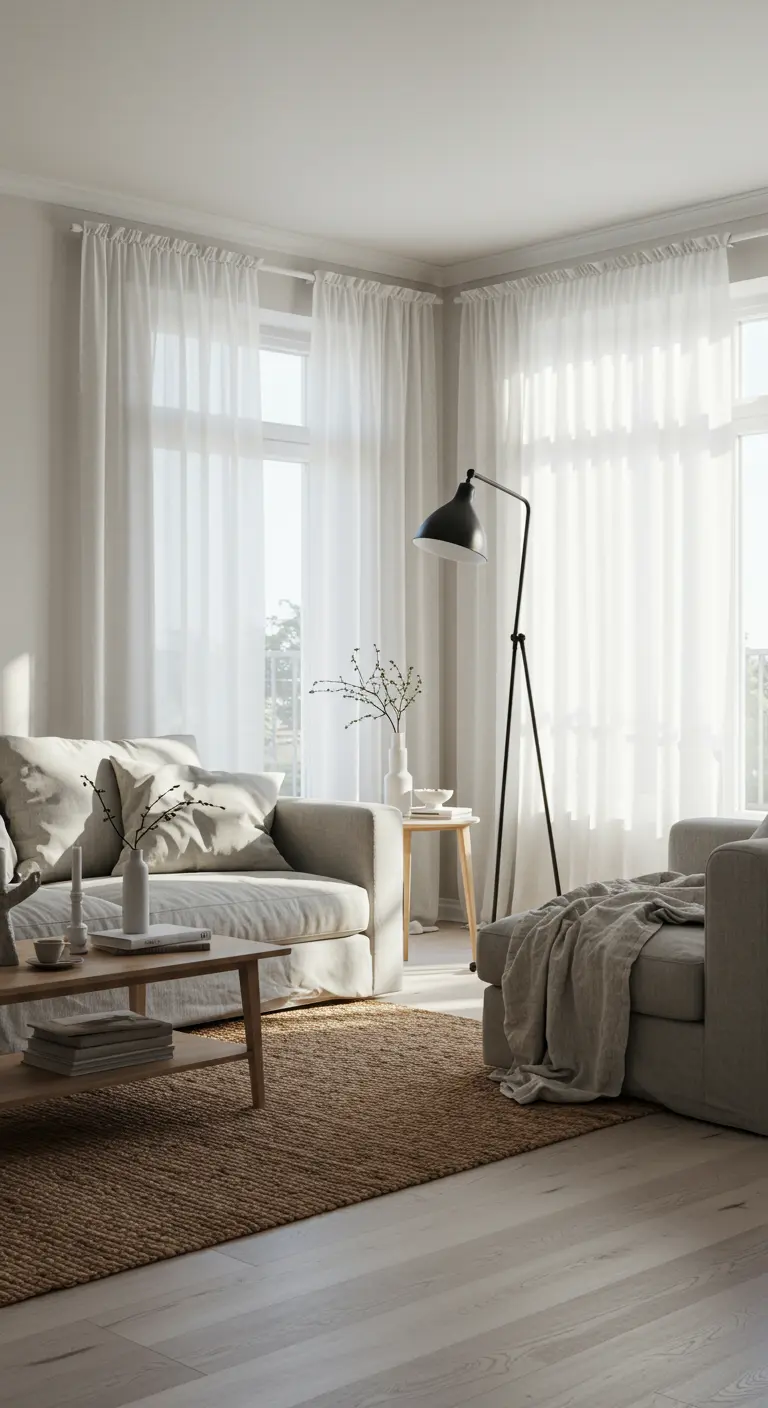
Soften your living space by swapping heavy drapes for layers of sheer white curtains.
This technique allows natural light to flood the room while maintaining privacy, creating an ethereal, glowing effect.
For a structured look, hang them high and wide—extending the rod well beyond the window frame to make your windows appear larger.
The combination of a natural fiber rug, like jute or sisal, with soft linen upholstery establishes a foundation of texture that feels calm and collected.
2. Unify with a Consistent Wood Tone

Create a seamless and calming effect in your kitchen and dining area by using the same light wood for both cabinetry and furniture.
This repetition of material prevents the space from feeling disjointed and establishes a strong, cohesive visual language.
A simple white tile backsplash and countertops keep the focus on the wood’s natural grain and warmth.
Introduce a subtle pattern with herringbone wood flooring to add dimension without competing with the clean lines of the joinery.
3. Elevate the Bedside with a Pendant Light
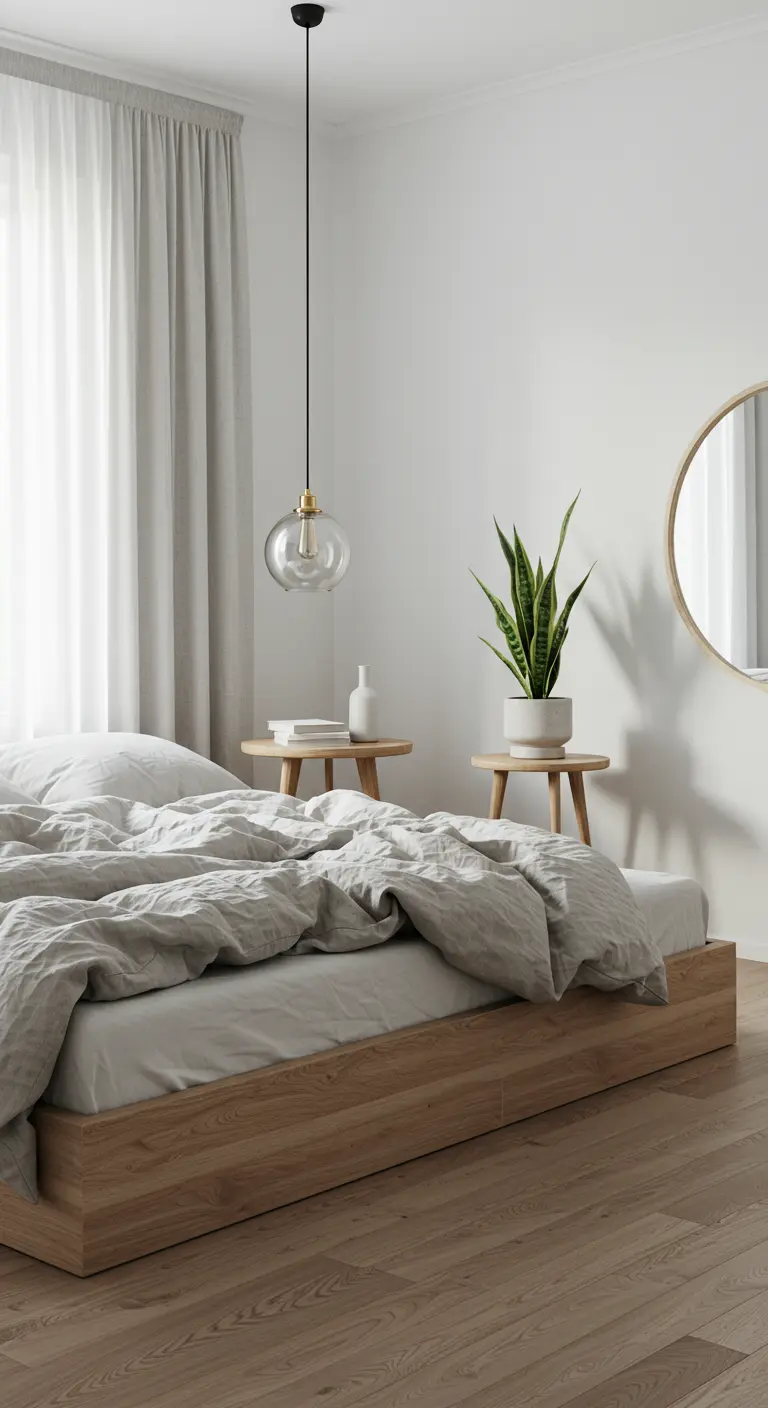
Free up surface space and add a touch of sculptural elegance by replacing a traditional bedside lamp with a low-hanging pendant.
Choose a simple glass or ceramic design that provides soft, ambient light perfect for winding down.
This move draws the eye upward, balancing the low profile of a minimalist platform bed.
Embrace the beauty of imperfection with rumpled linen bedding, which adds texture and a sense of relaxed comfort.
4. Maximize Small Spaces with Floating Surfaces
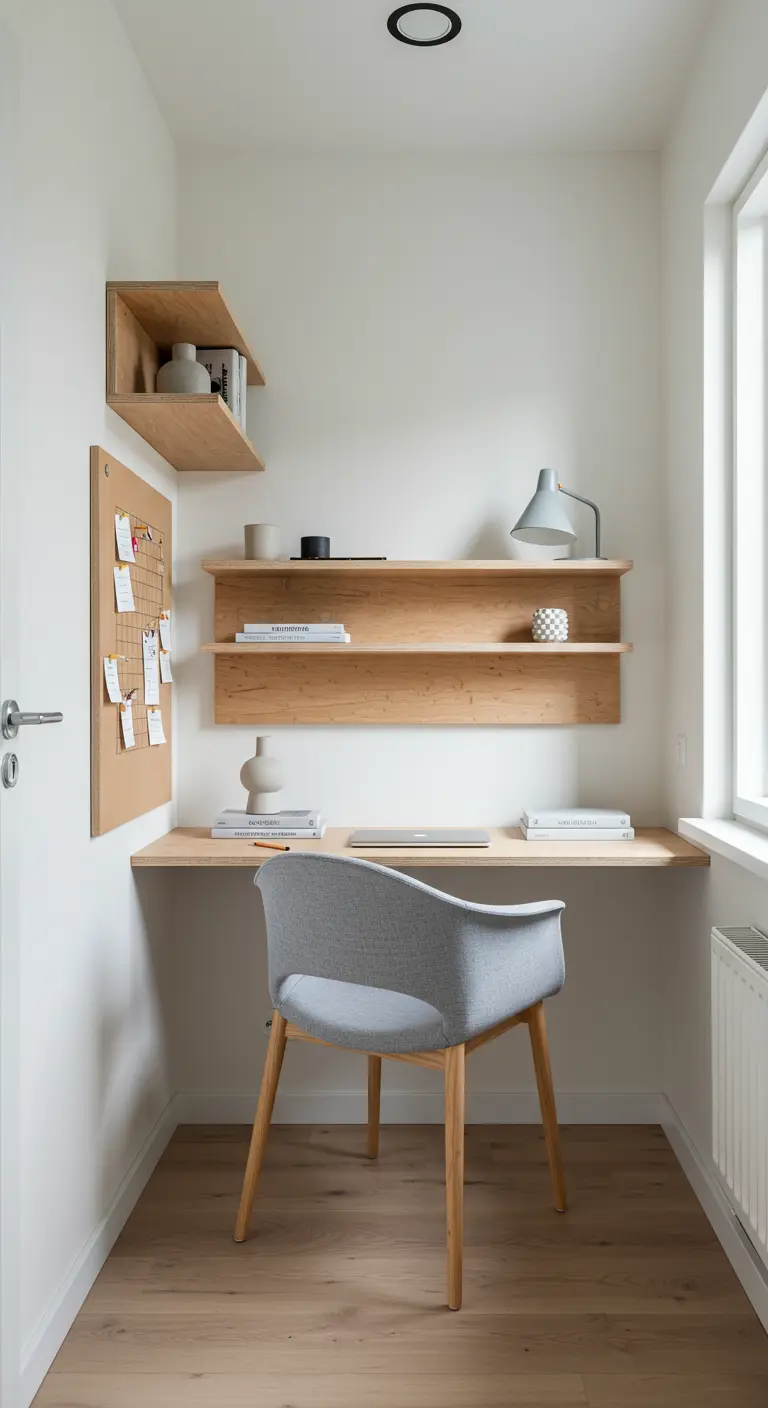
In a compact office or nook, install a floating desk and shelves to create a workspace that feels light and uncluttered.
By lifting furniture off the floor, you enhance the sense of space and make the room easier to clean.
Mount shelves at varying heights to create a dynamic, asymmetrical arrangement for books and objects.
A frameless corkboard adds warmth and a practical spot for notes without adding visual bulk.
5. Anchor an Entryway with Bold, Graphic Art
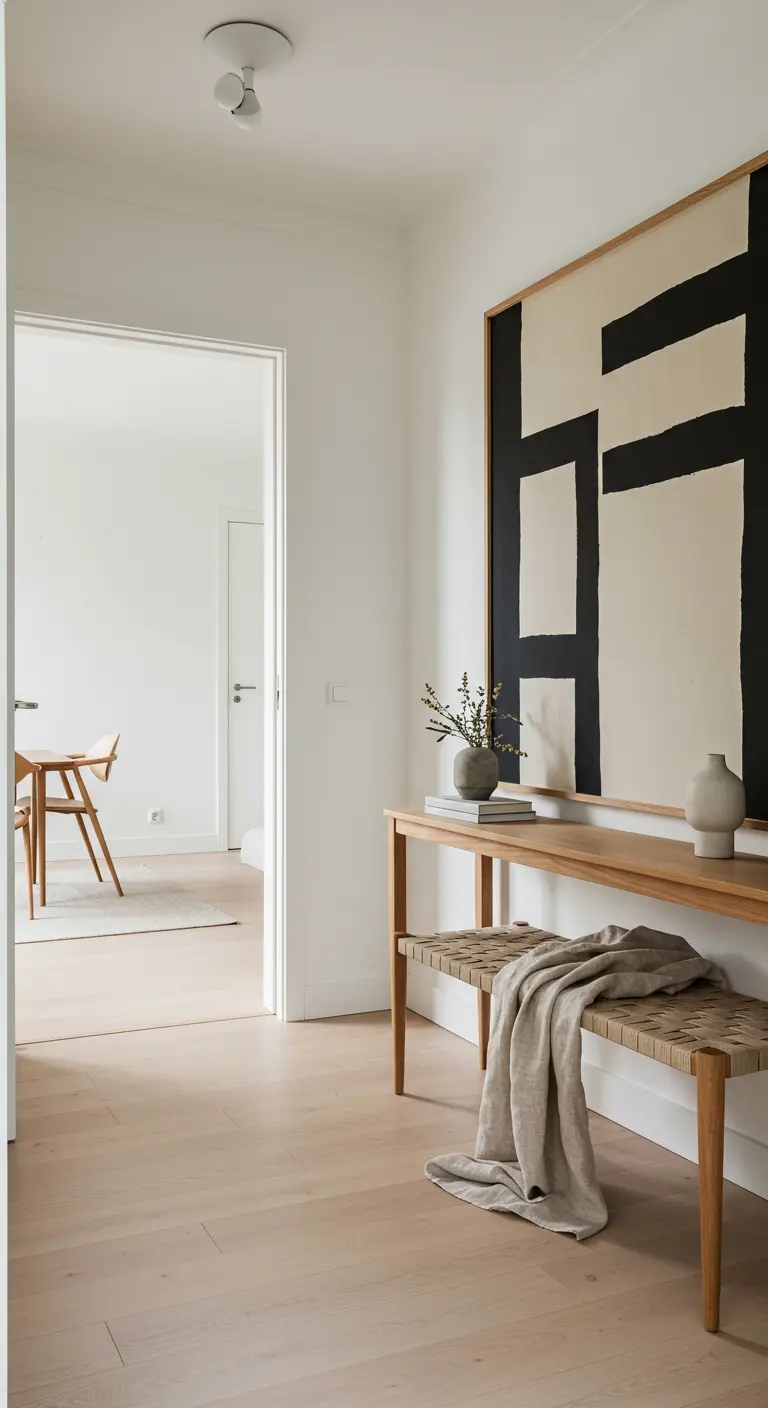
Make a powerful first impression by placing a large-scale piece of abstract art in your entryway.
The clean lines and high contrast of the artwork here act as a focal point, setting a sophisticated tone for the rest of the home.
Pair it with a simple, slim console table and a woven bench to provide function without detracting from the art.
The natural wood and fibers of the furniture soften the bold geometry of the painting, achieving perfect balance.
6. Design a Dedicated Reading Corner
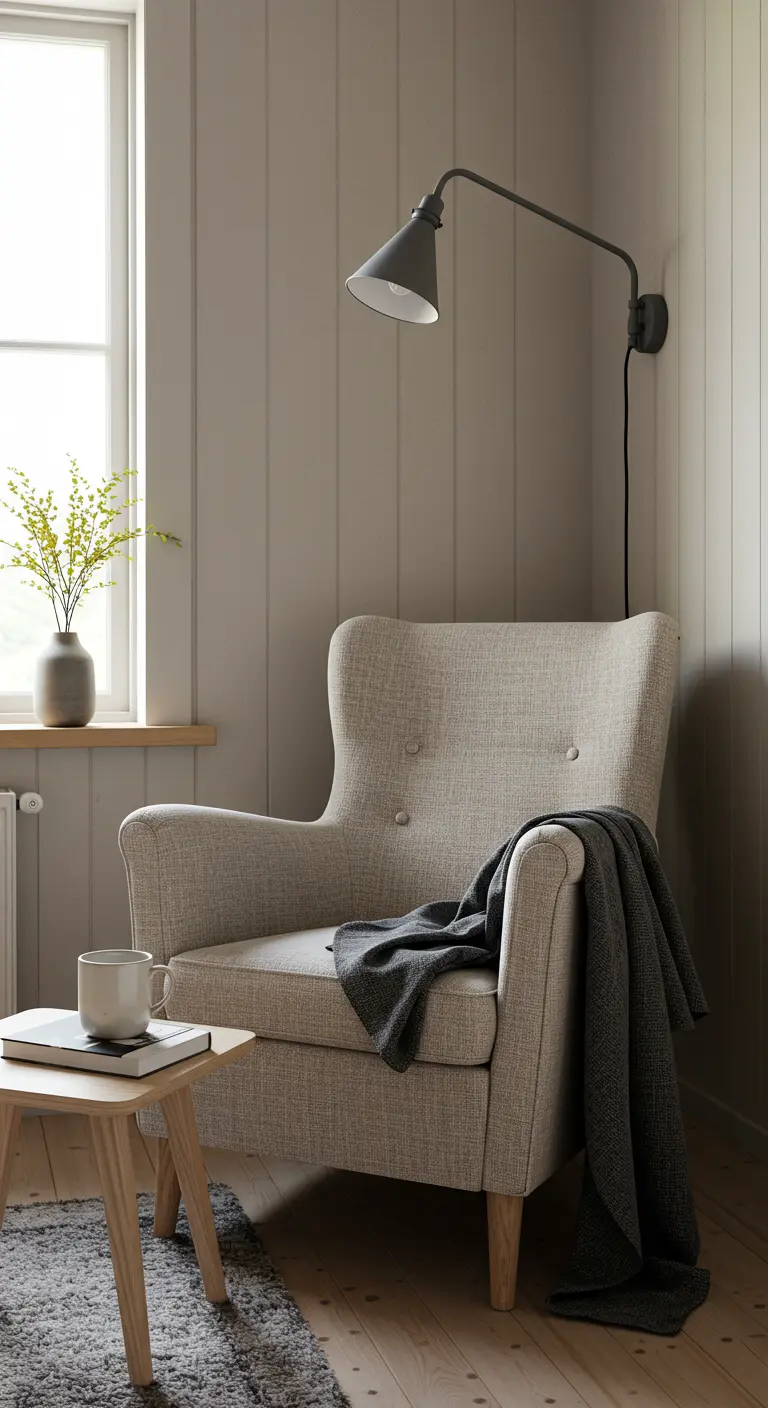
Carve out a cozy reading nook with three key elements: a comfortable armchair, good lighting, and a small table.
A wall-mounted swing-arm lamp is an excellent choice as it provides direct light without occupying floor or table space.
Add textural interest to a plain wall with vertical paneling, painted in a soft, muted tone for a calming effect.
Layering textiles, like a chunky wool throw and a plush rug, makes the corner feel intentionally snug and inviting.
7. Define Your Kitchen Island with Pendant Lighting
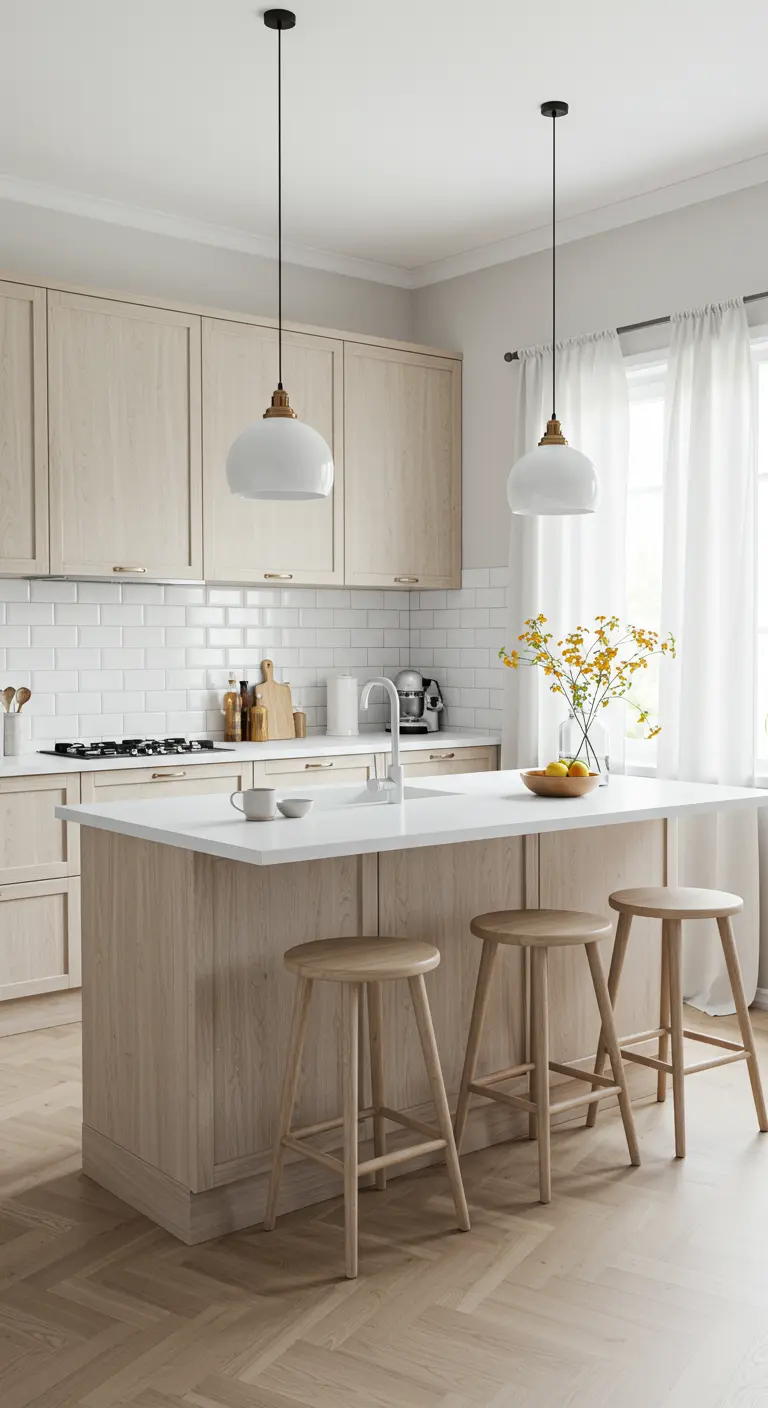
Use a pair of pendant lights to anchor your kitchen island and visually separate it from the rest of the workspace.
This not only provides essential task lighting but also turns the island into a deliberate gathering spot.
Combine modern white dome pendants with subtle brass or black accents for a look that feels both contemporary and timeless.
Pair with simple, backless wood stools that can be tucked neatly underneath the counter to maintain clean lines.
8. Create Atmosphere with Ambient Lighting
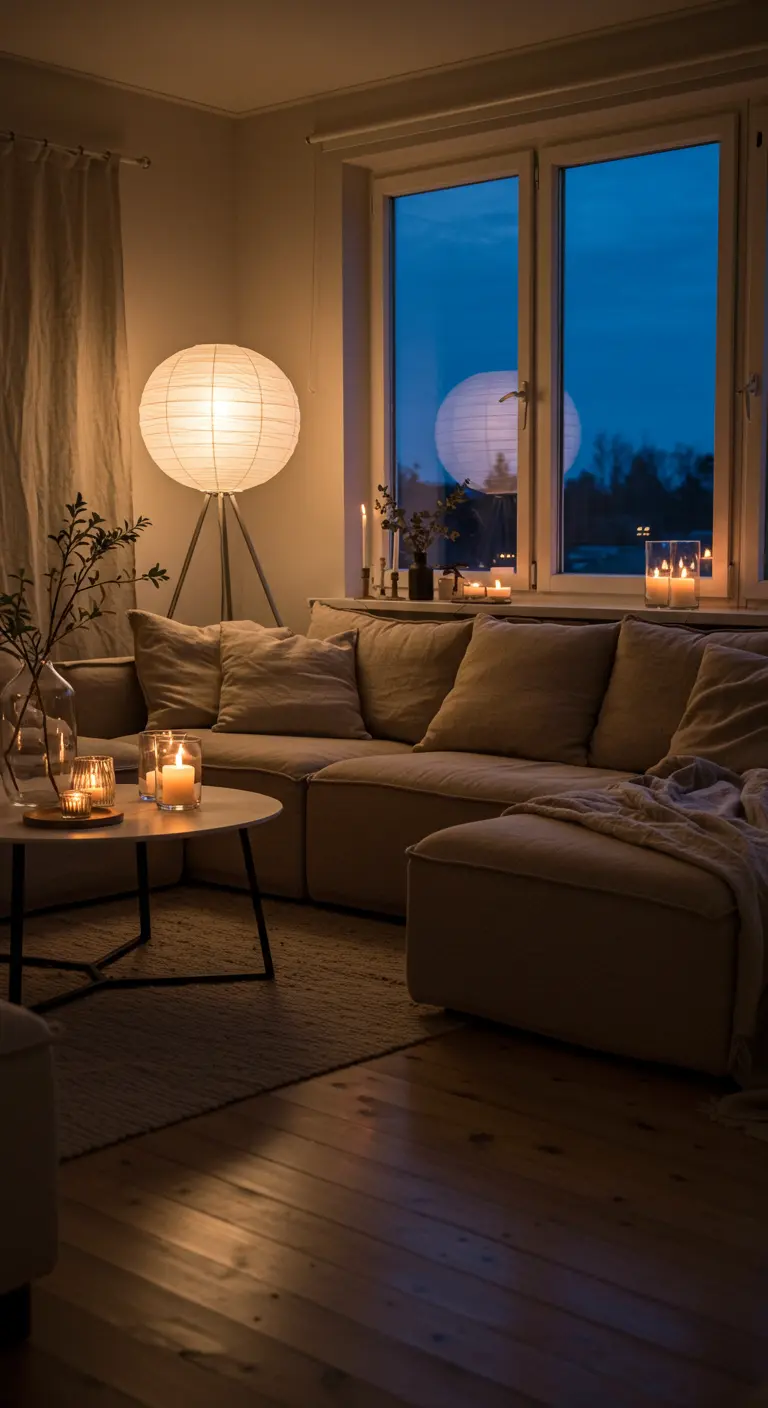
Cultivate a cozy evening mood by layering multiple sources of soft, warm light.
Instead of relying on a single overhead fixture, use a combination of floor lamps, table lamps, and candles to create pools of gentle illumination.
A paper lantern floor lamp diffuses light beautifully, casting a soft glow that eliminates harsh shadows.
This approach, known as ‘hygge’ in Danish culture, makes a space feel instantly more intimate and relaxing.
9. Mix Tile Shapes for Subtle Texture
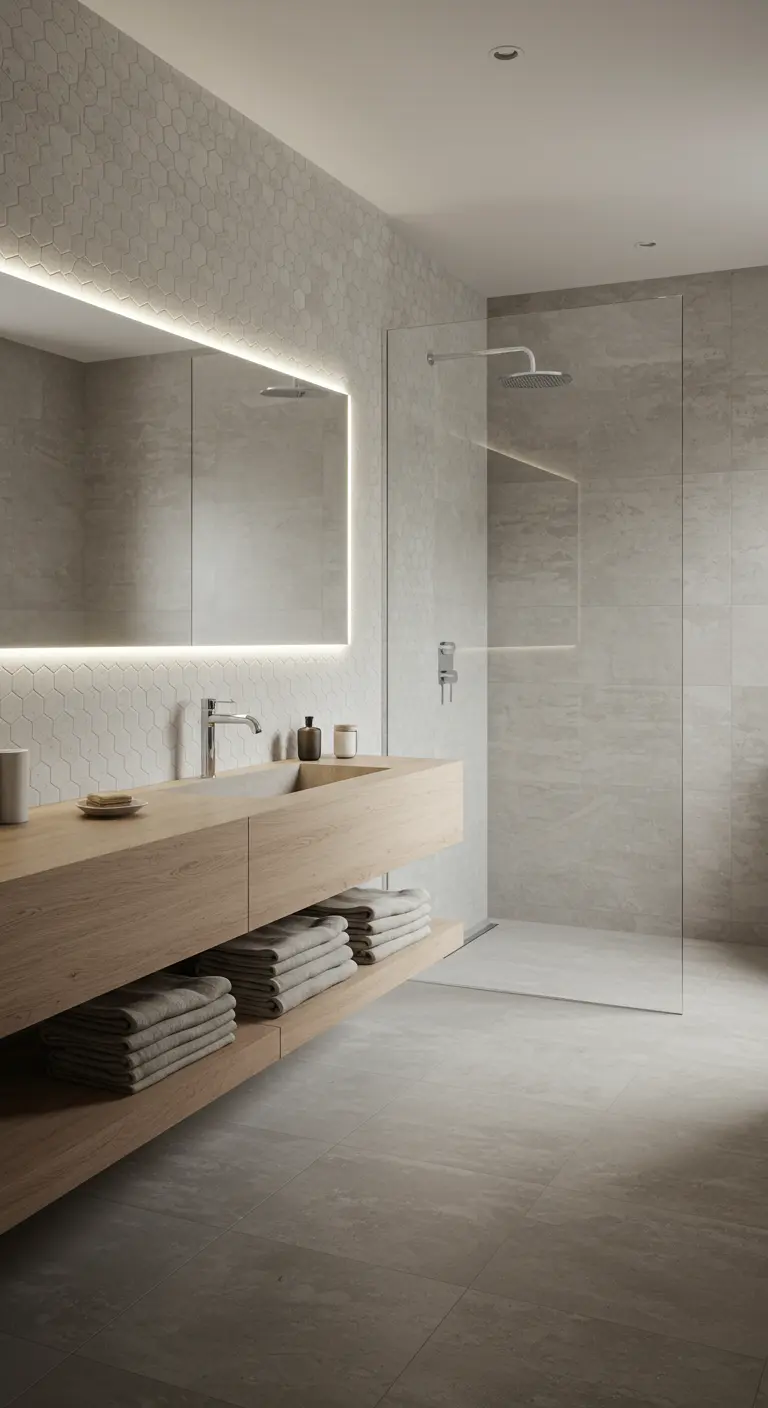
In a neutral bathroom, create visual interest by pairing different tile formats.
Here, a wall of small, hexagonal mosaic tiles behind the vanity contrasts beautifully with the large-format rectangular tiles in the shower and on the floor.
A floating wood vanity adds organic warmth and makes the room feel more spacious by revealing more of the floor.
For a clean, functional glow, integrate LED backlighting into the mirror—it provides shadow-free light for daily routines and doubles as a soft nightlight.
10. Embrace the Attic with Wall-to-Wall Wood
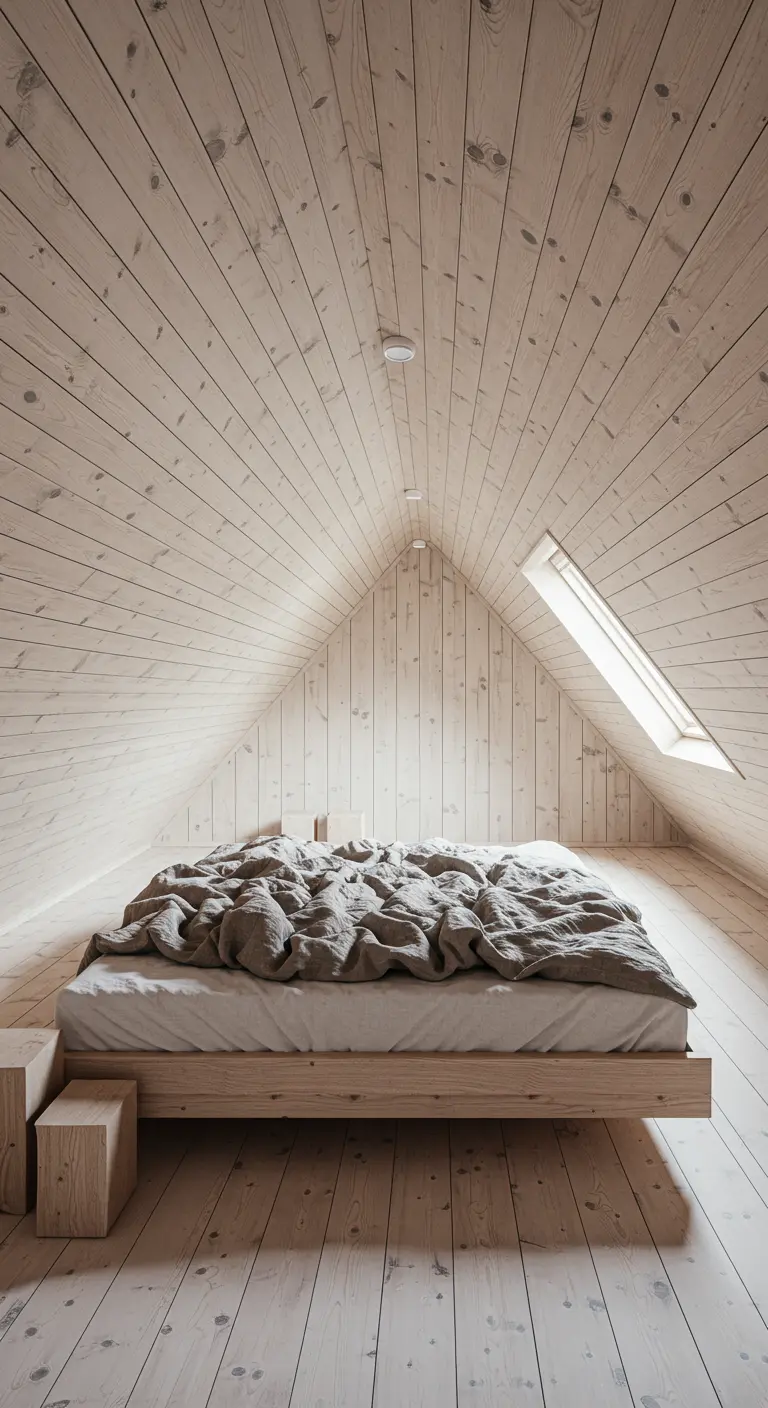
Transform an attic room into a serene retreat by cladding the walls and ceiling in pale wood planks.
This technique, often called a ‘timber cocoon,’ enhances the unique architectural shape of the space and creates an incredibly warm, enveloping feeling.
Keep furniture low-profile, like a simple platform bed, to maximize the sense of height.
A strategically placed skylight becomes the primary design feature, washing the wood in natural light and connecting the room to the sky.
11. Curate a Wall of Asymmetrical Shelving

Move beyond standard bookcases with a modular, wall-mounted shelving system that doubles as an art installation.
The varied sizes and depths of these boxes create a compelling rhythm and provide unique nooks for display.
To maintain a serene look, stick to a disciplined color palette for your objects. Grouping similar items, like a collection of neutral-toned ceramics, ensures the display feels curated, not cluttered.
Incorporate negative space by leaving some boxes empty, allowing the arrangement to breathe.
12. Dissolve Boundaries with a Glass-Walled Room
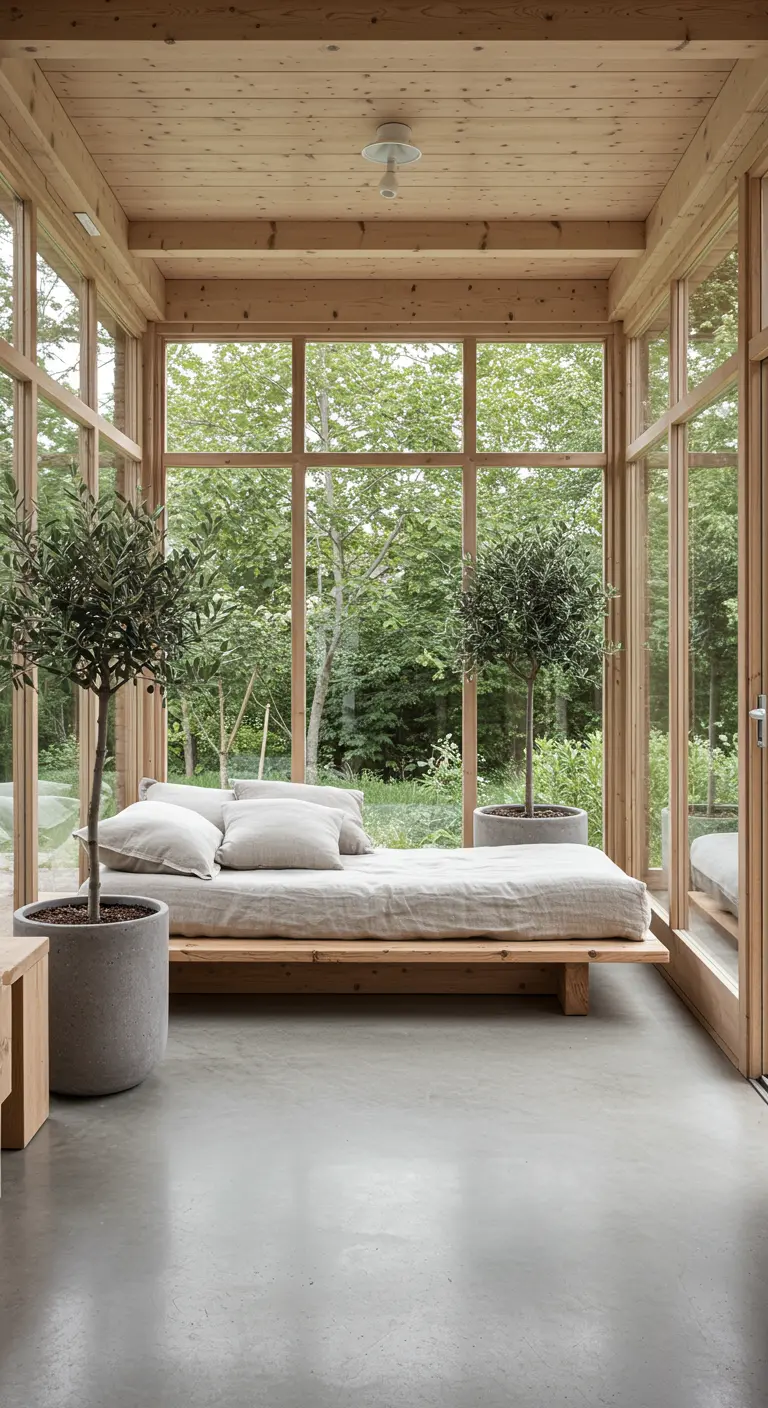
If you have a sunroom or covered patio, emphasize the connection to the outdoors with floor-to-ceiling glass walls.
Furnish the space simply with a low wooden daybed and minimalist floor cushions to keep the view unobstructed.
Bring large potted plants, like olive or fig trees, inside to literally blur the line between your home and garden.
A polished concrete floor is a practical and modern choice that contrasts beautifully with the warmth of the wood and the softness of the linen textiles.
13. Soften Geometry with a Sculptural Dining Set
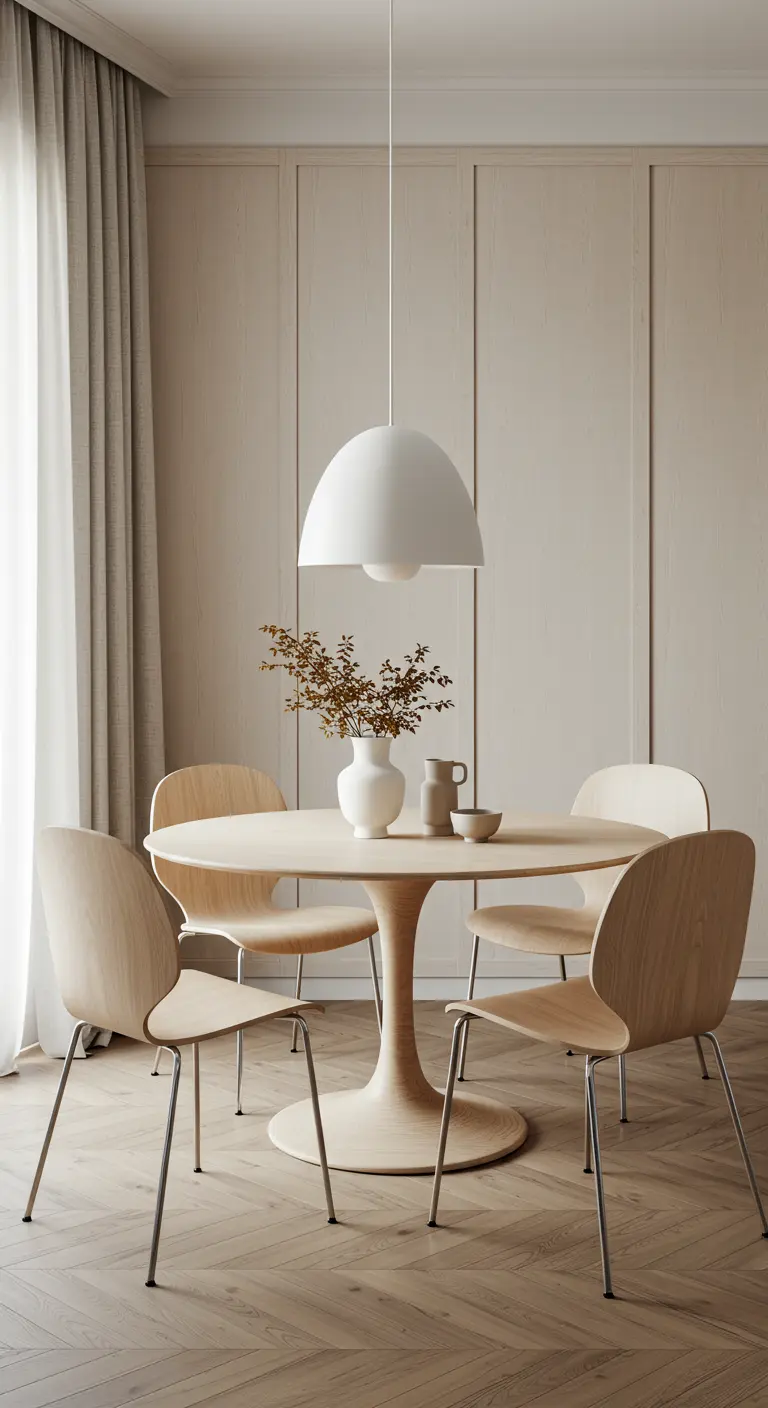
In a dining area with clean, linear wall paneling, introduce curves to create a pleasing contrast.
A round pedestal table eliminates legs, creating more space and a smoother flow around it.
Pair it with chairs that have gently curved backrests and seats, which are not only ergonomic but also add a soft, organic element to the room.
A large, dome-shaped pendant light hung low over the table reinforces the circular motif and creates an intimate dining atmosphere.
14. Cultivate Calm in the Nursery

Design a nursery that feels soothing for both you and your baby by sticking to a palette of soft neutrals and natural materials.
A simple crib made from light, unfinished wood sets a gentle, organic tone.
Choose functional pieces that are also beautiful, like a classic wooden rocking chair with grey upholstery and an adjustable floor lamp for targeted light during late-night feedings.
A plush, round wool rug defines the space and provides a soft surface for future playtime.
15. Blend Rustic Textures with Modern Forms
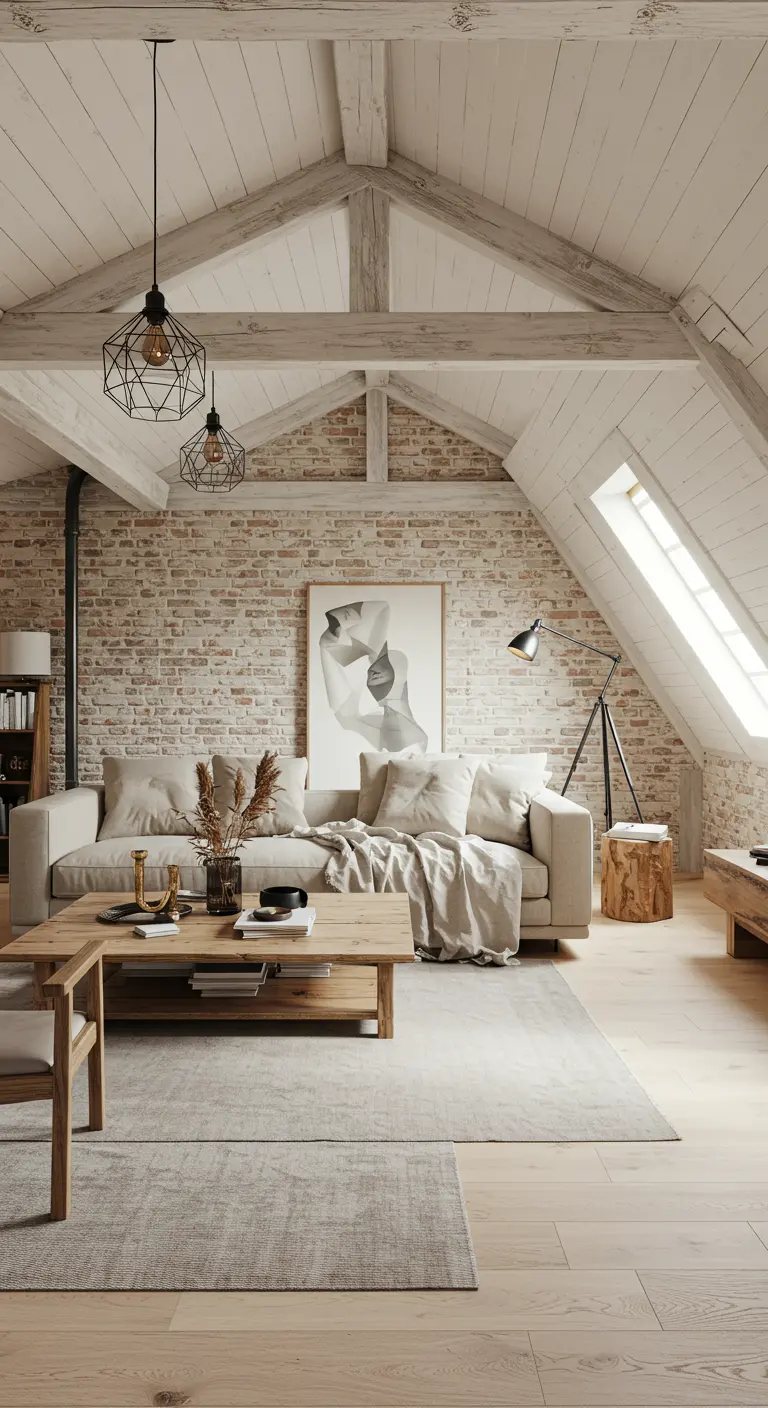
Create a sophisticated, modern rustic living room by layering rich textures over a clean foundation.
An exposed brick wall and whitewashed ceiling beams provide a characterful, historic backdrop.
Contrast these rough elements with a sleek, low-slung sofa in a soft neutral fabric.
Layering a simple grey rug over a larger one adds depth and comfort, while industrial-style cage pendants introduce a touch of modern edge.
16. Unify a Gallery Wall with Matching Frames
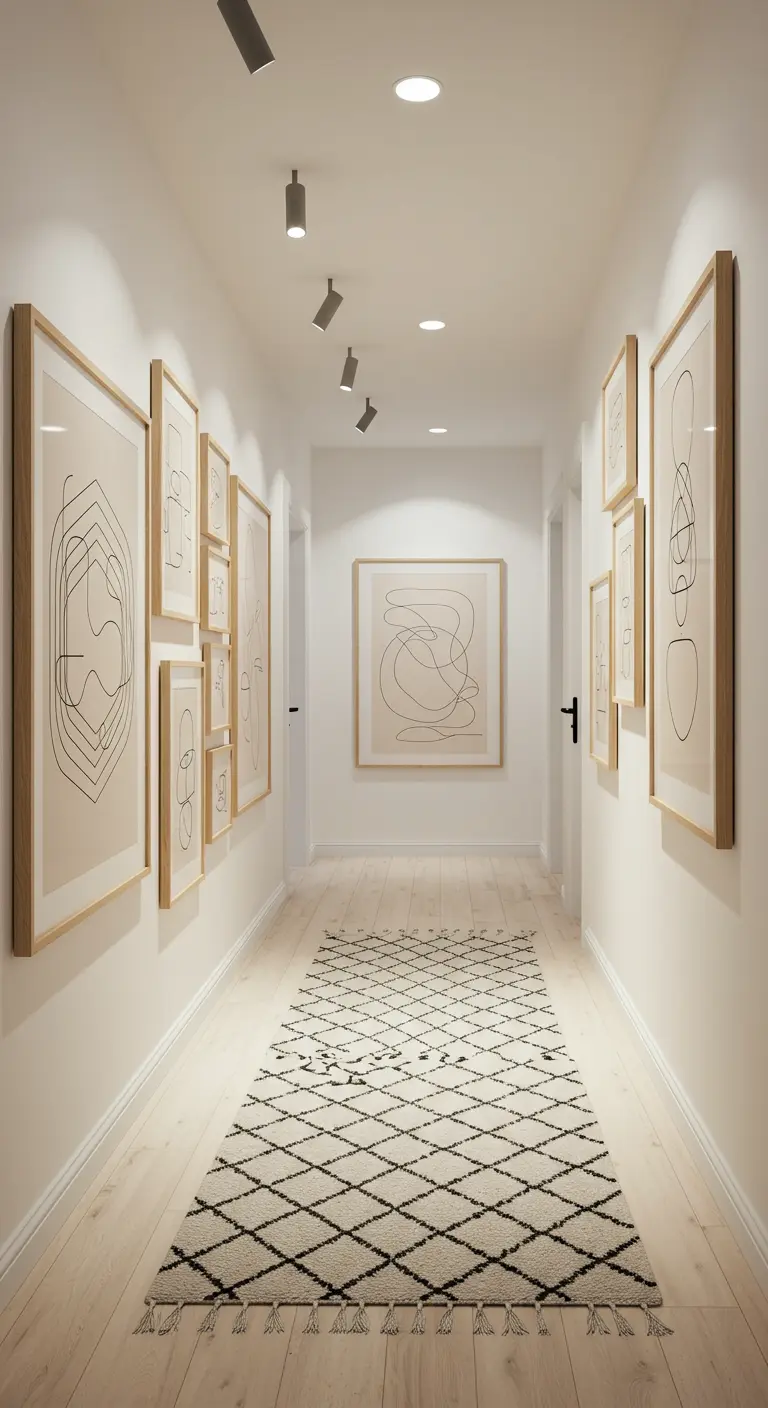
Create a polished and impactful gallery wall in a hallway by using identical frames for all your artwork.
Simple, light wood frames provide consistency and let the art itself take center stage.
Choose a theme for your art—like the abstract line drawings here—to ensure the collection feels cohesive rather than chaotic.
A graphic diamond-patterned runner draws the eye down the corridor, making the space feel longer and more dynamic.
17. Divide Small Spaces with Curtains
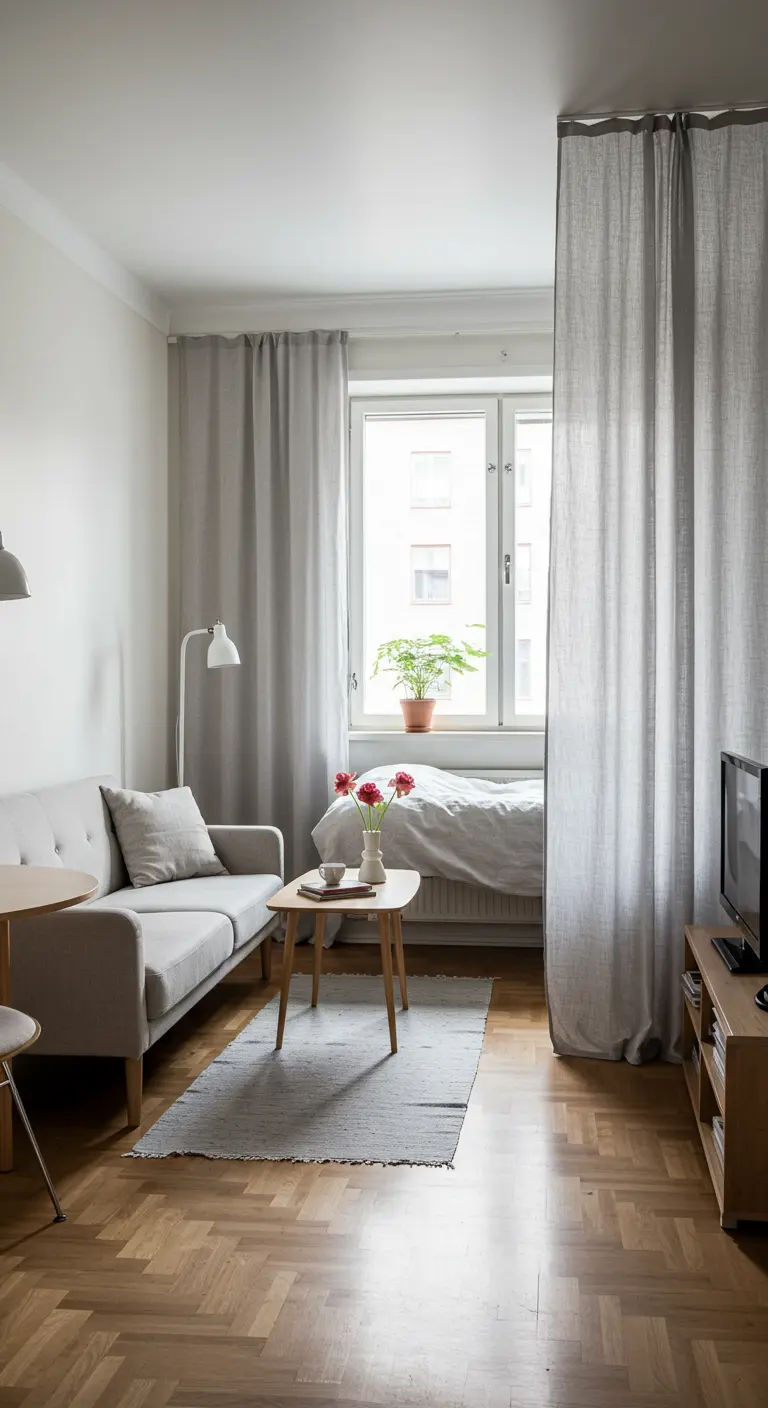
In a studio or chic small apartment, use a ceiling-mounted curtain track to create a soft, flexible room divider.
This allows you to separate sleeping and living areas, offering privacy and visual separation without the permanence or cost of building a wall.
Choose a heavyweight linen or cotton fabric in a neutral color that complements your walls to maintain a sense of spaciousness.
Hanging the curtain from ceiling to floor creates a clean, architectural line that enhances the illusion of height.
18. Master the Art of Layered Bedding
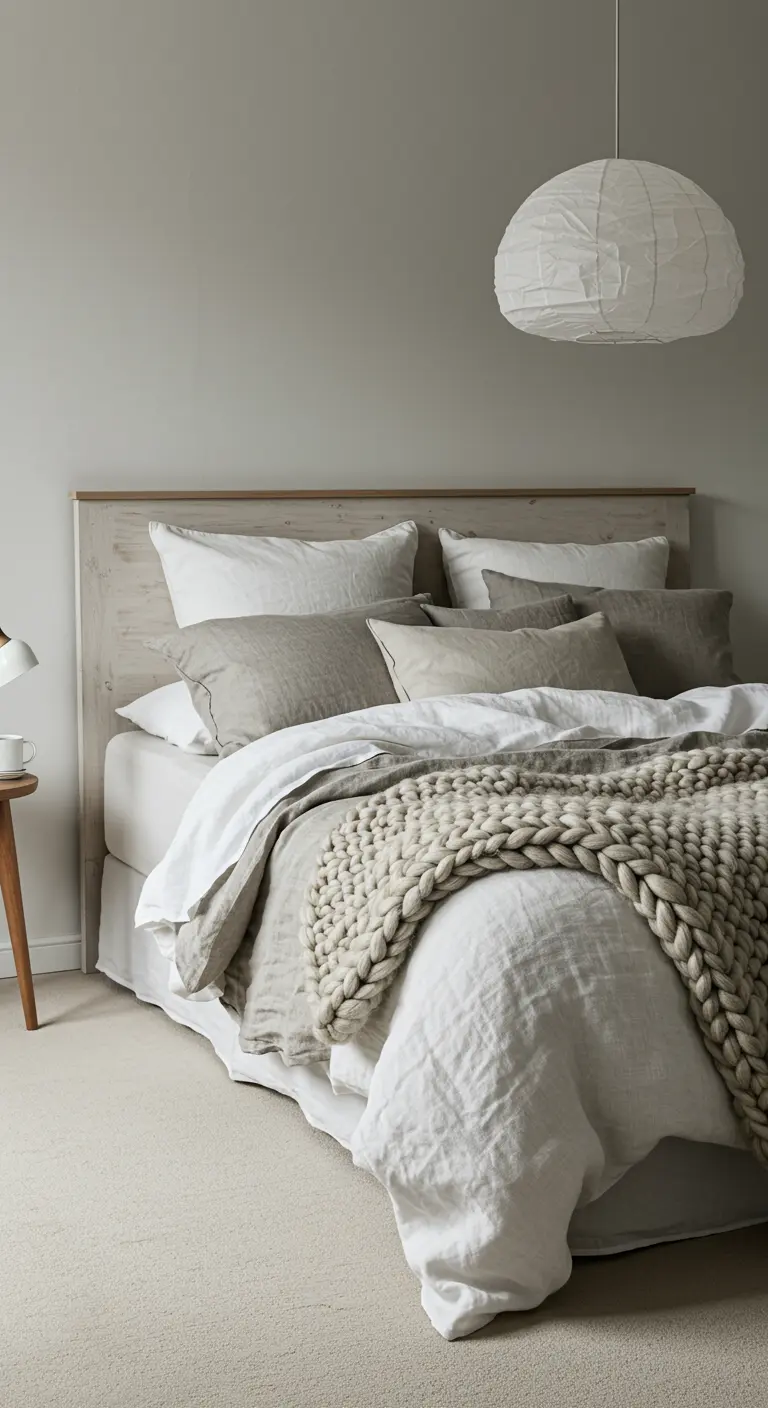
Elevate your bed from a simple piece of furniture to a luxurious focal point by layering multiple textures.
Start with crisp cotton sheets, add a duvet covered in soft, breathable linen, and top it with a super-chunky knit throw for dramatic texture.
Use pillows in varying shades of the same neutral color family (like stone, beige, and white) to create subtle depth.
A simple, whitewashed headboard provides a rustic yet clean backdrop for this cloud of textiles.
19. Balance Open Shelving with Closed Cabinets
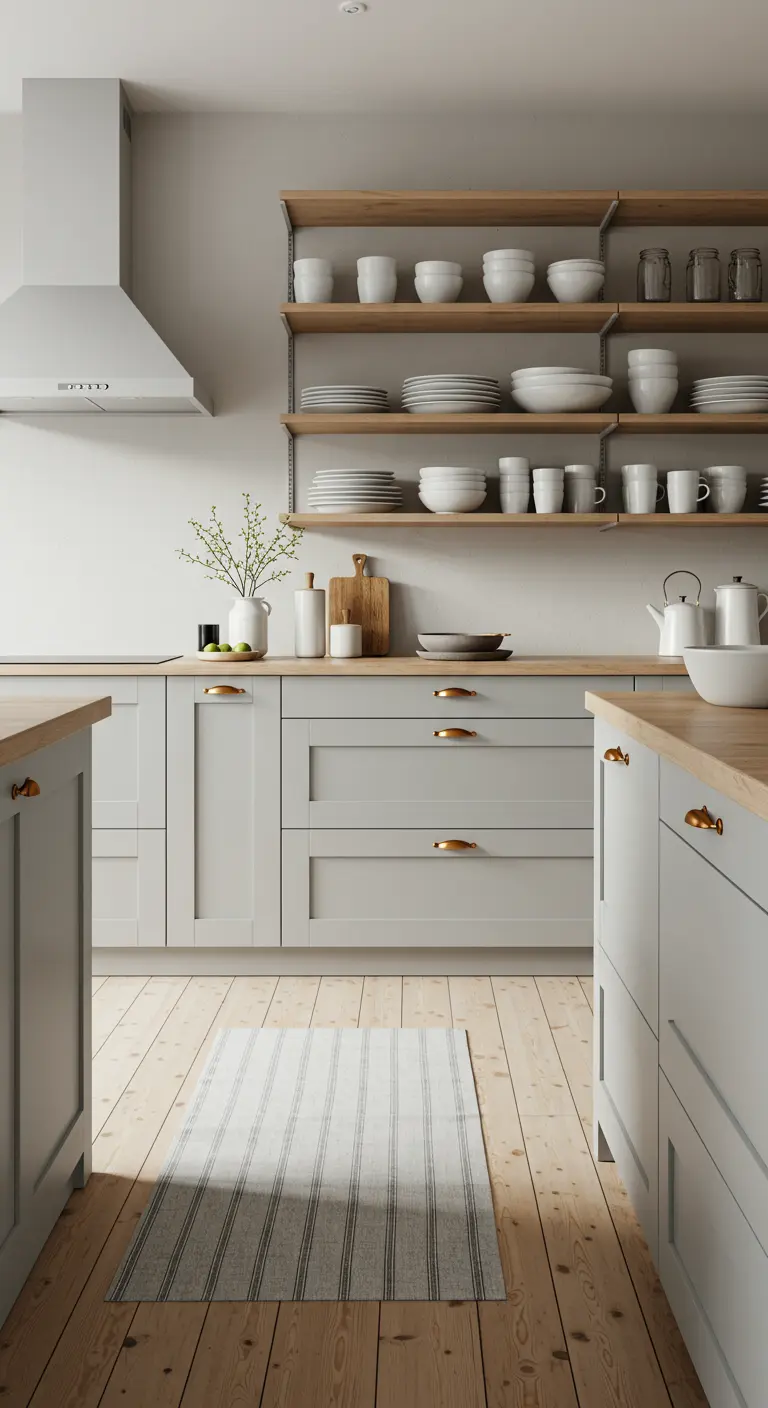
Achieve a kitchen that is both beautiful and practical by combining open and closed storage.
Use open wood shelves for your most attractive, everyday items like white ceramics and glassware—this turns functional objects into a curated display.
Keep less sightly appliances, mismatched mugs, and pantry items hidden below in simple, Shaker-style cabinets.
This hybrid approach gives you the airy, decorative feel of open shelving without sacrificing the essential, clutter-hiding function of closed doors.
20. Ground Your Space with a Geometric Rug
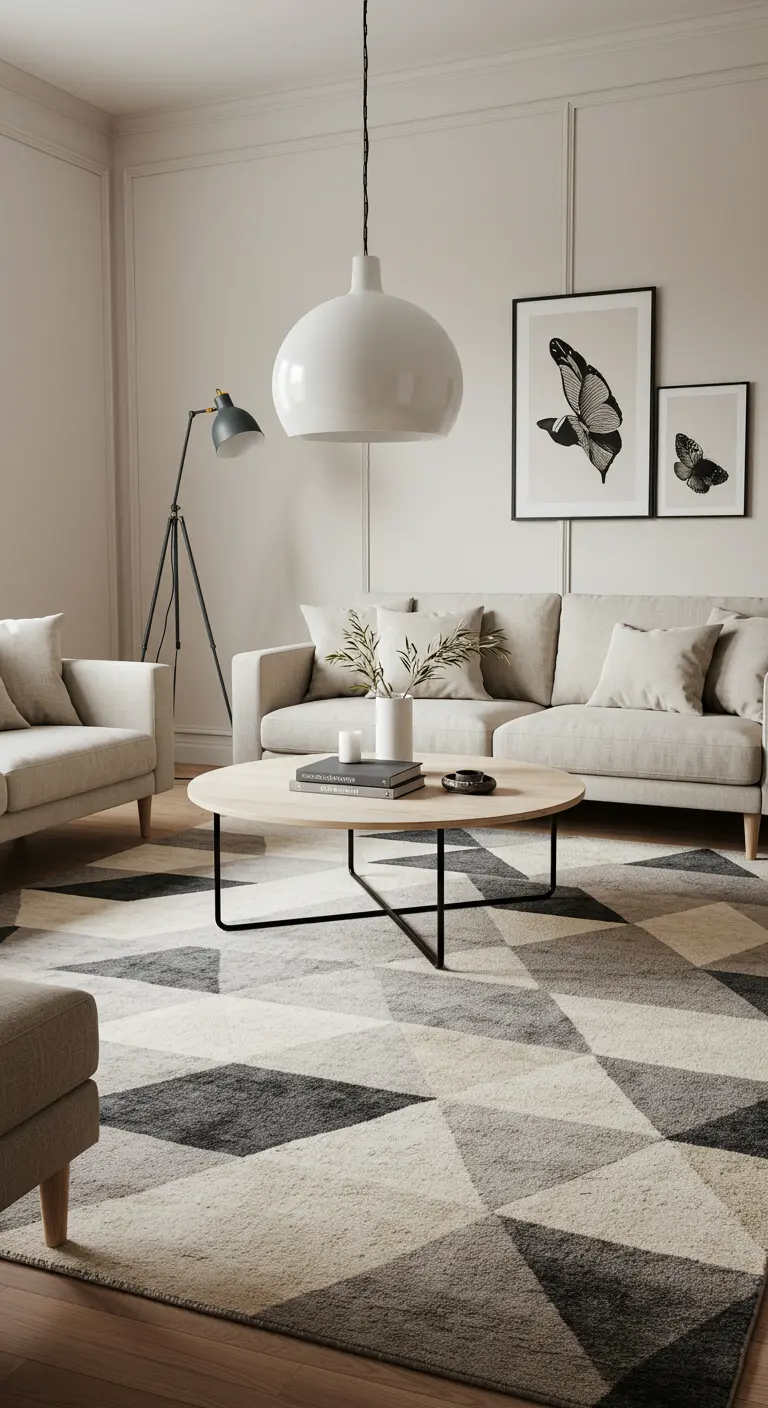
Introduce energy and structure to a neutral living room with a large, geometric-patterned rug.
A bold design in a simple black, cream, and grey palette adds significant visual interest without introducing overwhelming color.
Ensure the rug is large enough that at least the front legs of your main furniture pieces are sitting on it; this anchors the entire seating arrangement.
Pull colors from the rug for other accents, like the black-and-white butterfly prints and the dark grey lamp, to create a harmonious, pulled-together look.
21. Practice Elegant Restraint in the Bathroom

Create a truly spa-like atmosphere by focusing on a few high-quality, beautifully designed elements.
A freestanding bathtub with a clean, sculptural shape serves as the centerpiece of this Scandinavian minimalist bathroom.
Instead of a traditional towel rack, lean a simple bamboo ladder against the wall—it’s functional, adds a natural texture, and has a light, airy profile.
A small wooden stool provides a convenient surface for a book or soap, reinforcing the room’s organic, uncluttered sensibility.
22. Share Light with an Internal Glass Wall
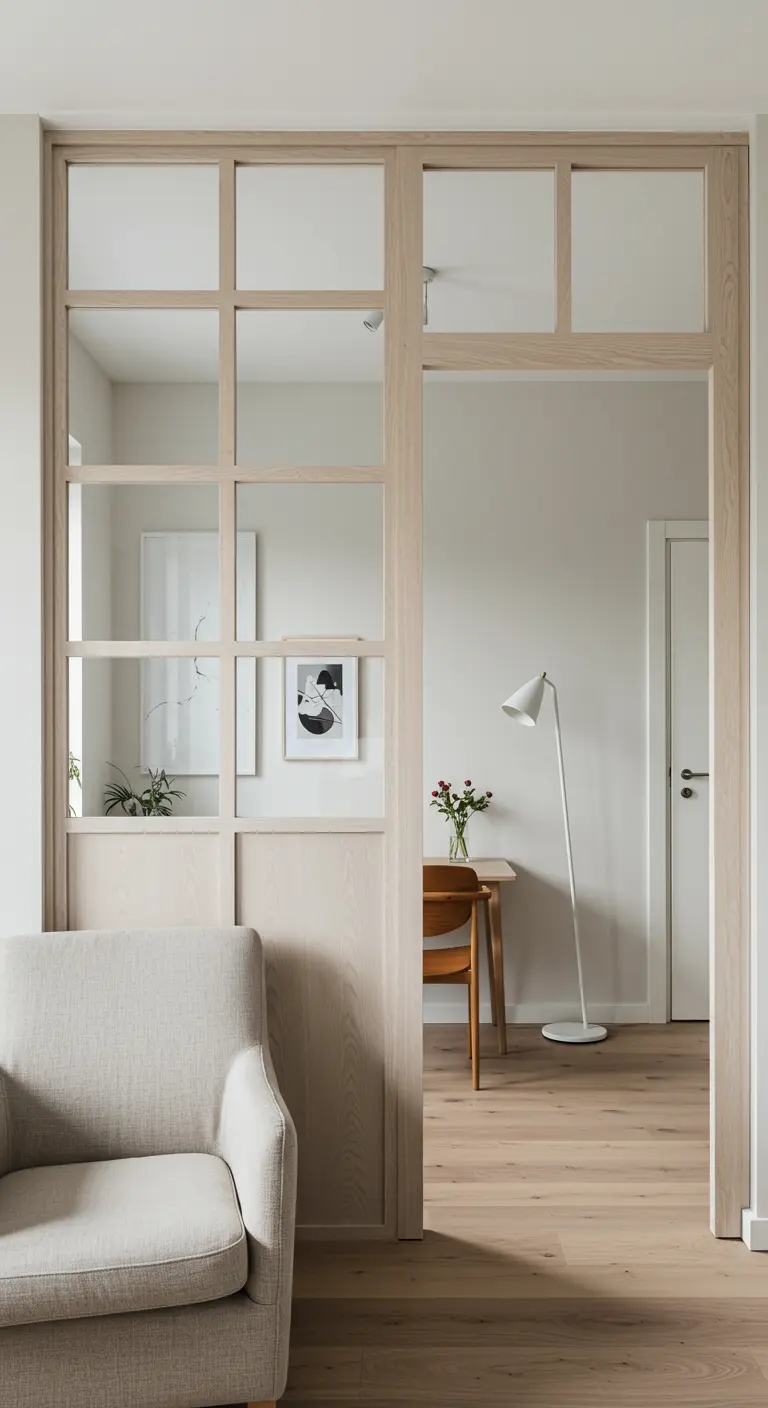
Separate two rooms while maintaining an open feel by installing an internal wall with glass panels.
This design solution, framed here in light wood, allows natural light to flow from one space to the next, making both areas feel brighter and larger.
It’s an ideal way to create a home office, reading nook, or entryway that feels distinct yet connected to the main living area.
Using a mix of clear and frosted or reeded glass can provide privacy where needed while still allowing light to pass through.
23. Create Depth with a Moody Accent Wall
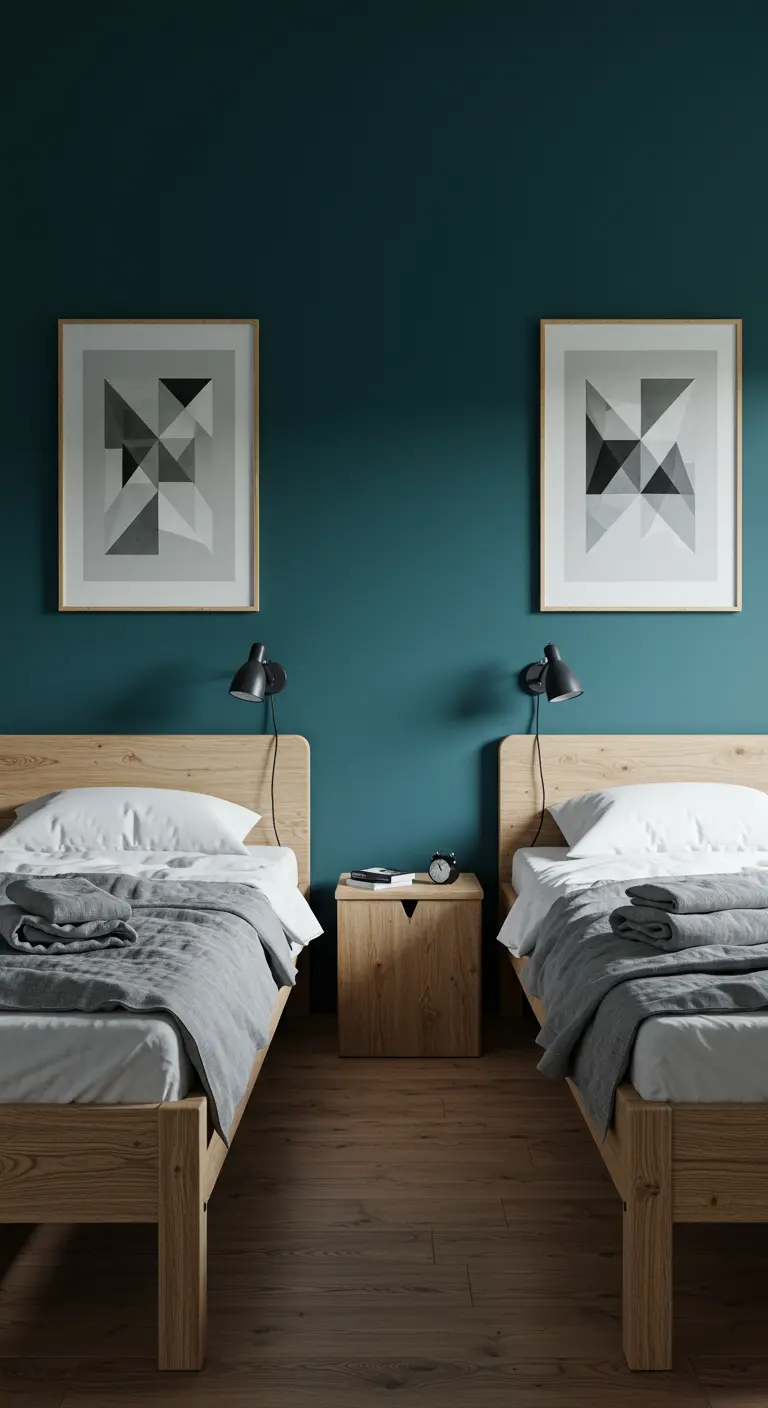
Give a neutral bedroom a dose of sophisticated drama by painting one wall in a deep, moody color like this rich teal.
This creates a stunning backdrop that makes pale wood furniture and light-colored artwork pop.
In a room with twin beds, create a sense of order and balance with perfect symmetry: use identical bedding, bedside tables, wall sconces, and framed art.
The dark wall color absorbs light, making the space feel cozier and more intimate—perfect for a bedroom.
24. Embrace Low-Slung, Casual Comfort
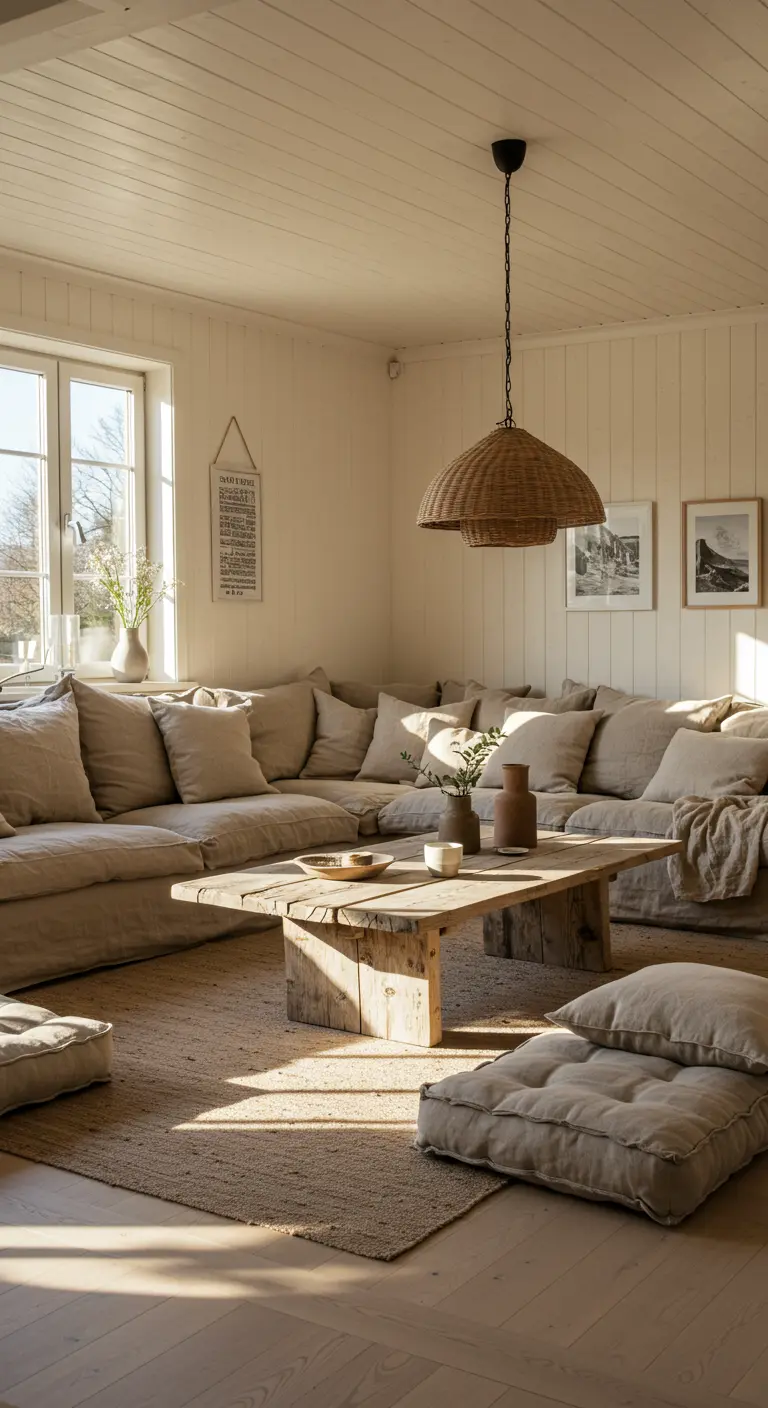
Design a living room that prioritizes relaxation and togetherness with comfortable, low-profile seating.
An oversized, deep-seated sectional piled with linen cushions invites casual lounging.
Supplement seating with large floor cushions that can be easily moved around, enhancing the informal, communal vibe.
A chunky, rustic coffee table and a large woven rattan pendant light keep the atmosphere grounded, natural, and effortlessly welcoming.
